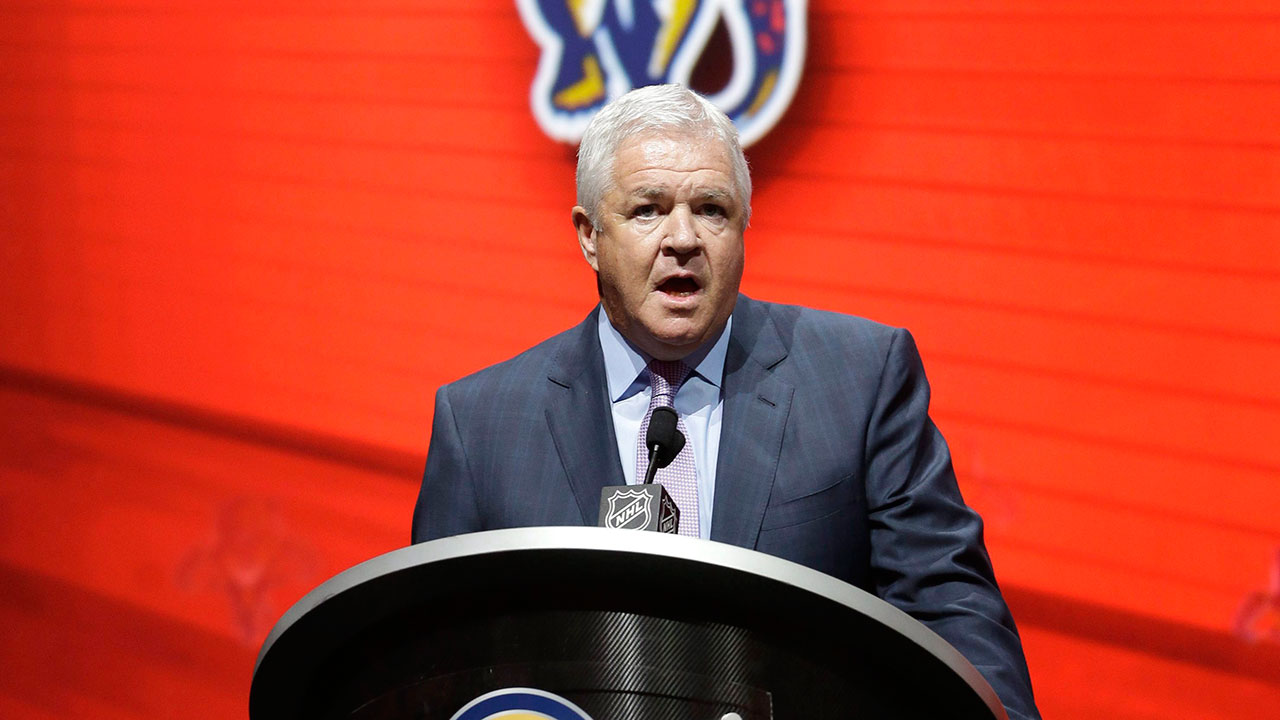With a 3-2 win in overtime, the Florida Panthers have tied up their Round 1 series against the Washington Capitals. At face value, there isn’t really a red flag in sight. Tied series through four games, sure, what’s there to worry about?
The Capitals’ two wins were pretty lopsided, by a score of 4-2 and 6-1 and Florida hasn't led the series yet. In fact, the Presidents' Trophy winning Panthers were just one goal away from being pushed to the brink of elimination against a team with an aging core and unstable goaltending.
So what’s gone wrong for the team many had as a favourite to win it all in the early-goings of the Stanley Cup Playoffs, and were there any positive signs, aside from the score, in Game 4?
5-on-5 play
The Panthers were the best offensive team in the regular season at 5-on-5. No one created more quality offence than Florida’s league leading 3.25 expected goals for per 60, and no one matched their scoring with 3.33 goals per 60. Along with being a top-five team in attempting slot shots off the cycle, Florida finished second in the league with 7.62 scoring chances off the rush per 60, trailing only the Avalanche.
Aside from the regular season standings, this is a major reason why Florida was such a favourite going against a Capitals team with questions in net between Vitek Vanecek and Ilya Samsonov.
Enter the post-season, and the story’s been quite a bit different.
The Panthers’ offensive attack has significantly dipped this series — and the Capitals deserve credit for upping their defensive efforts to contain such a high octane team. Florida’s creating a few less cycle chances, but where they’ve really been stumped is off the rush to a rate of 4.95 scoring chances per 60 that ranks 11th in the league through all teams’ Game 4s.
Washington’s limited Florida to just 15 rush attempts, only eight of which have gone on goal. And four of those have ended up in the back of the net, showing just how important it is to take these opportunities away from the Panthers.
In Game 1, Washington kept the Panthers to just four attempts, and the only one to actually reach the goal ended up in the back of the net. In Game 2, Florida attempted the same number of rush chances. This time, three went on goal and one converted. On the road in Game 3, Florida could only muster two rush attempts, and the only one to reach the net was a score. Game 4 was technically their best when it comes to generating offence in transition with a series-high five attempts, three shots on goal, and once again, one goal.
Moving forward, it’s a matter of continuing to find ways to cut through the Capitals’ defence and find these opportunities because clearly the Panthers know how to make the most of them.
Through four games, Carter Verhaeghe leads the way with attempts, and has a goal to show for it in Game 4. His transitional abilities were a strength throughout the regular season, as he led the team in scoring chances off the rush. Now, he’s still at the top for the Panthers, but not nearly to the same degree. Mason Marchment and Sam Bennett each have three attempts and one goal apiece, while Jonathan Huberdeau’s one-for-one. Florida now needs more from players like Anthony Duclair and Aleksander Barkov who showed this was a strength of their game before the playoffs kicked off, as well as their best players at generating off the rush.
Power Play
Unfortunately for the Panthers, they’re not just struggling at 5-on-5 to score. The power play was a source of offence through much of the regular season, especially post-deadline. When Aaron Ekblad went down with injury, the fifth skater on that top unit became deadline-acquisition Claude Giroux while Barkov shifted to the point. The five forward unit helped this team increase their offensive generation on the advantage, and surprisingly, led to more time in the offensive zone. As we learned in the regular season, they spent about 71.8 per cent of their power play time in the offensive zone after the deadline, up from 68.6 per cent before.
Ekblad returned from injury for the post-season and went back to his post on the top power play unit. While that makes sense, there’s also the idea of not fixing what wasn’t broken. That’s why Florida’s shifted back to their regular season approach as of late. The problem is, they’re 0-for-13 on the power play in this series after going 0-for-4 in Game 4.
Overall through four games, they’re still holding the zone and playing in the offensive end 67.3 per cent of the time. That’s a slight downturn from their regular season-wide 70 per cent possession breakdown. But it’s what they’re doing within that time that’s so concerning — slightly less puck movement and fewer quality passes to the slot, which is leading to fewer scoring chances.
Heading into Game 5
The series may be tied, but Florida has to kick it up a notch to advance and have a chance moving forward. Credit to the Capitals for their efforts, but this series shouldn’t be as close as it is when stacking up the rosters head-to-head.
That puts pressure not just on the players to play to their strengths and execute, but the coaches to find the right adjustments to implement. In Game 3, that came in line adjustments that didn’t quite work out, as well as a shift in power play deployment.
But these shortcomings also cast some doubt on deadline decisions, overall, to get grittier and tougher to play with additions like Ben Chiarot, when it’s the Panthers' speed game that’s falling short.
Data via Sportlogiq



